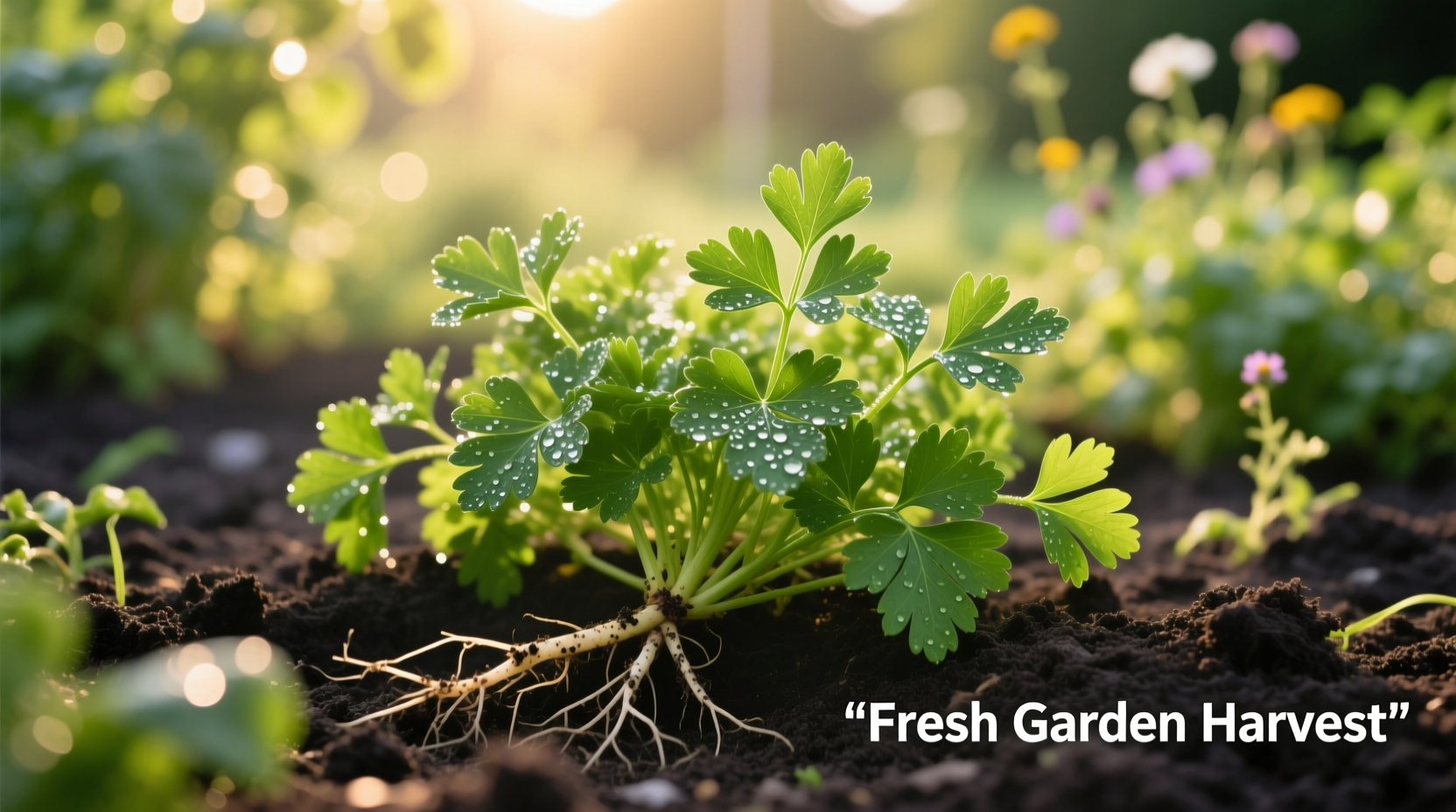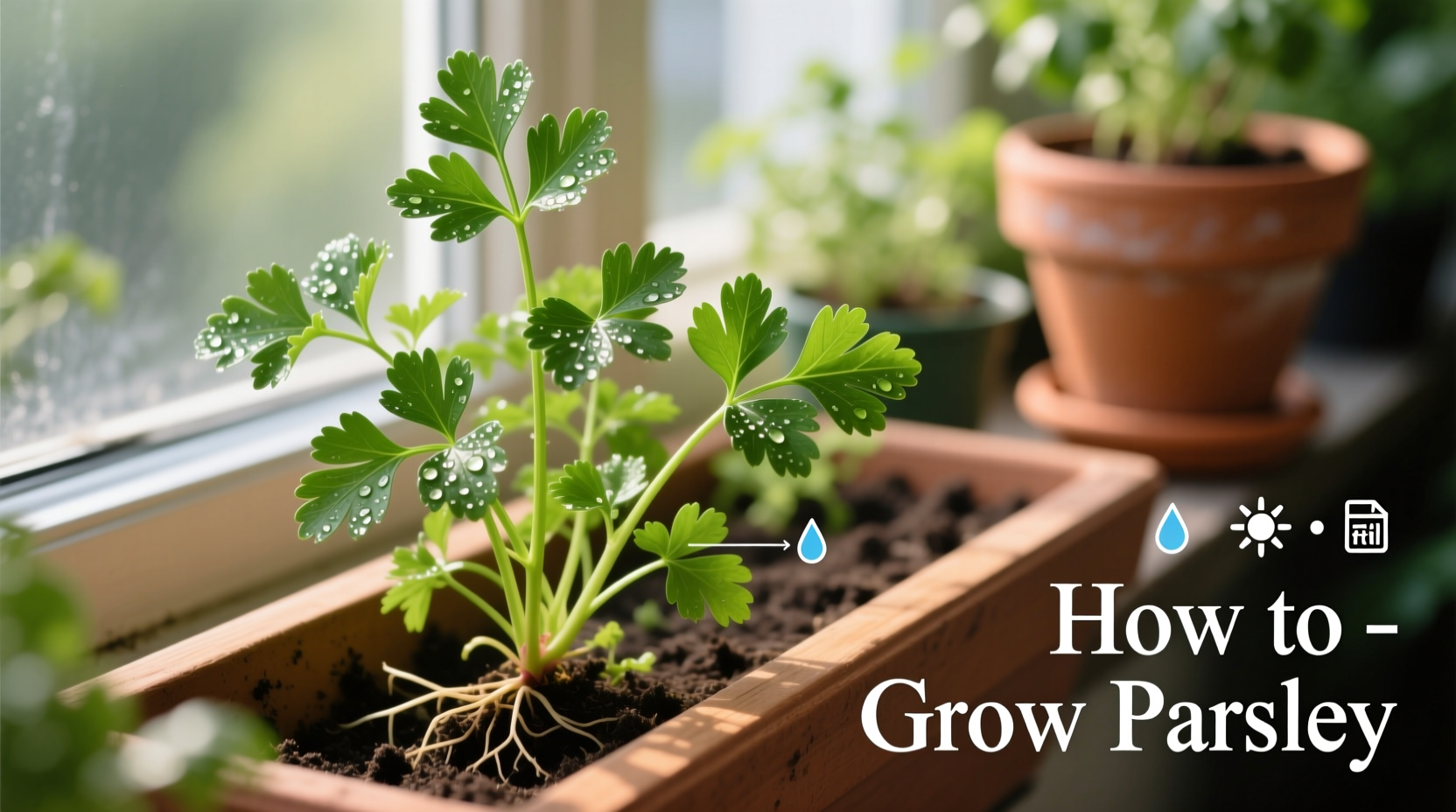Grow vibrant parsley by planting seeds 1/4 inch deep in well-draining soil with pH 6.0-7.0. Provide 6-8 hours of sunlight daily and maintain consistent moisture (1-2 inches of water weekly). Germination takes 2-4 weeks at 70°F soil temperature. Harvest outer leaves when plants reach 6 inches tall, cutting 1 inch above soil to encourage regrowth. Start seeds indoors 8-10 weeks before last frost or sow directly after soil warms to 50°F.
Discover exactly how to grow parsley successfully with this comprehensive guide. Whether you're a first-time gardener or looking to perfect your herb cultivation skills, you'll learn proven techniques for growing lush, flavorful parsley year after year. We'll cover everything from seed selection to harvest, including solutions for common problems like slow germination and yellowing leaves. By the end, you'll have all the knowledge needed to enjoy fresh parsley from your own garden.
Understanding Parsley Varieties and Growth Requirements
Parsley (Petroselinum crispum) comes in two main varieties: curly leaf and Italian (flat-leaf). Curly parsley offers a milder flavor perfect for garnishes, while Italian parsley delivers a more robust taste favored by chefs. Both types share similar growing requirements but Italian parsley tends to be more heat-tolerant. According to the USDA Agricultural Research Service, parsley grows as a biennial but is typically cultivated as an annual in home gardens.
Before planting, understand parsley's fundamental needs. This cool-season herb thrives in temperatures between 50-85°F and requires 6-8 hours of sunlight daily. While it can tolerate partial shade, full sun produces the most flavorful leaves. The University of California Cooperative Extension confirms that parsley grows best in USDA hardiness zones 3-9, making it suitable for most home gardens across North America.
Starting Parsley from Seed: Overcoming Germination Challenges
Parsley's slow germination (2-4 weeks) often frustrates beginners. The secret to success lies in proper seed preparation. Soak seeds overnight in warm water to soften their tough outer coating, which significantly improves germination rates. Plant seeds 1/4 inch deep in moist seed-starting mix, maintaining consistent soil temperature around 70°F.
For optimal timing, start seeds indoors 8-10 weeks before your last expected frost date. The Old Farmer's Almanac recommends transplanting seedlings outdoors when they have three true leaves and nighttime temperatures consistently stay above 40°F. If planting directly in your garden, wait until soil temperature reaches at least 50°F, typically 3-4 weeks before the last frost.
| Growth Stage | Timeframe | Care Requirements |
|---|---|---|
| Seed Germination | 14-28 days | Keep soil consistently moist; maintain 70°F soil temperature |
| Seedling Establishment | 3-4 weeks after germination | Provide 6-8 hours of light; thin to 6-8 inches apart |
| Mature Plant | 70-90 days from seed | Water 1-2 inches weekly; fertilize monthly with balanced fertilizer |
| Harvest Ready | When 6+ inches tall | Harvest outer leaves first; never remove more than 1/3 of plant |
Creating the Perfect Growing Environment
Soil preparation makes or breaks your parsley crop. This herb prefers rich, well-draining soil with a pH between 6.0-7.0. Amend garden beds with 2-3 inches of compost before planting to improve soil structure and nutrient content. For container growing, use a high-quality potting mix rather than garden soil.
Watering properly is crucial for healthy parsley. Maintain consistent moisture without waterlogging—aim for 1-2 inches of water per week. The Royal Horticultural Society notes that inconsistent watering causes the most common problem: yellowing leaves. During hot summer months, check soil moisture daily and water when the top inch feels dry. Mulching with 2 inches of straw helps maintain moisture levels and prevents soil temperature fluctuations.
Harvesting Techniques for Maximum Flavor and Regrowth
Timing your harvest correctly ensures the best flavor and plant longevity. Wait until plants reach at least 6 inches tall before taking your first harvest. The optimal time to pick parsley is in the morning when essential oils are most concentrated. Always harvest outer stems first, cutting 1 inch above the soil line to encourage new growth from the center.
For continuous harvest throughout the growing season, never remove more than one-third of the plant at a time. The University of Minnesota Extension reports that properly harvested parsley can produce for 4-6 months. To preserve flavor, use fresh parsley within 2 days or freeze leaves in ice cube trays with water or olive oil.
Troubleshooting Common Parsley Growing Problems
Even with proper care, parsley may encounter issues. Yellowing leaves typically indicate overwatering or nutrient deficiency—reduce watering frequency and apply a balanced liquid fertilizer. Aphids and spider mites occasionally attack parsley; spray affected plants with a strong stream of water or use insecticidal soap for severe infestations.
If your parsley bolts (sends up flower stalks), it's responding to heat stress. While flowering reduces leaf production, the flowers are edible and attract beneficial insects. To prevent bolting, provide afternoon shade during hot weather and maintain consistent soil moisture. In regions with hot summers, consider growing parsley as a cool-season crop in spring and fall.
Winter Care and Long-Term Plant Management
Parsley often survives mild winters and returns stronger the following spring. Before first frost, cut plants back to 2 inches and mulch heavily with straw or leaves. In colder zones, transplant container-grown parsley indoors near a south-facing window. The Missouri Botanical Garden confirms that overwintered parsley typically produces earlier and more abundantly than newly planted seeds.
For best flavor and plant health, replace parsley every 2-3 years. Older plants become woody and less productive. To maintain a continuous supply, sow new seeds every 3-4 weeks during the growing season. Remember that parsley self-seeds readily—allow a few plants to flower and set seed for next year's volunteer crop.












 浙公网安备
33010002000092号
浙公网安备
33010002000092号 浙B2-20120091-4
浙B2-20120091-4